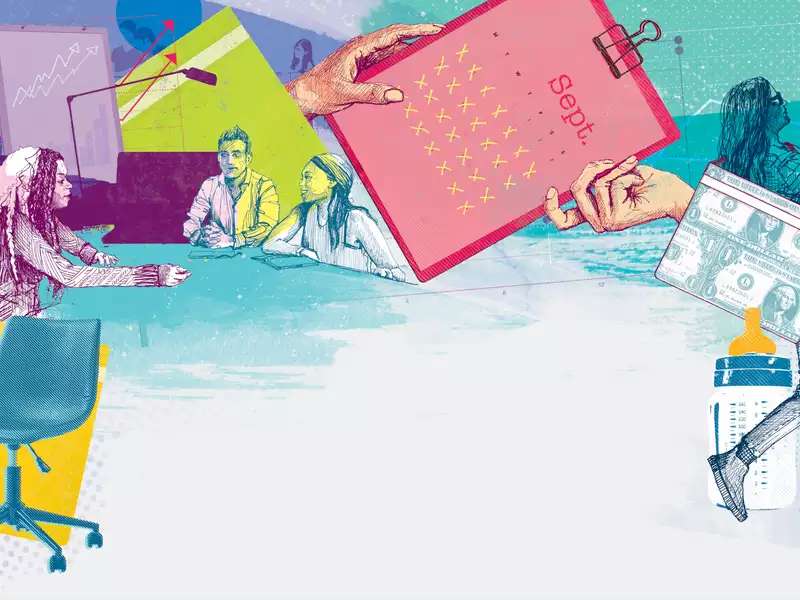
One alumna discovers how maternity leave has broader benefits — not just for the parent but for the workplace

Our understanding of gender identity as a concept begins to form when we’re toddlers, and — because exposure to anti-LGBTQIA+ attitudes has the potential to cause long-term psychological damage — it’s essential that educators and families give young people the freedom to explore and recognize how they define it generally and in relationship to the self.
Though attempts to codify restrictive binary gender categories into law can undermine healthy development, nearly three dozen states have introduced more than 100 anti-LGBTQIA+ bills targeting the rights of transgender people, especially youth, over the past few months. This record-breaking flurry of anti-LGBTQIA+ legislation threatens the physical and mental wellness of transgender youth and raises newfound challenges for all of us.
In the face of this legislative overreach, it’s our responsibility as educators and family members to support healthy development and combat anti-LGBTQIA+ sentiments.
Research suggests that between 18 and 24 months, most children develop the ability to recognize and label binary gender groups such as girl/boy, and by about age 3, they’ve begun to assign labels to their own gender identity.
During this critical period of development and the years that follow, we can help young people form healthy gender identities through small shifts in daily routines that can make a big difference. Using nongendered language when addressing children in classes can make LGBTQIA+ students and families feel seen, safe, and welcome. Calling students “third graders,” “historians,” or “folks” may take some getting used to but is a simple step that helps to create welcoming classrooms.
School leaders and teachers must ensure that their schools are embedding literature throughout the day that gives all students opportunities to see themselves and others represented in a positive light. It is crucial that children have an opportunity to read books that include a variety of family structures and gender identities. Additionally, delivering social and emotional learning (SEL) lessons on on gender and sexual identity that give children the space to explore their individual identity,
while explaining the difference between sex and gender, eliminates some of the challenges and misconceptions many adults face when unpacking the gendered world around them.
Educators can advocate for students by hosting a Gay-Straight Alliance/Gender and Sexuality Alliance (GSA) program to provide affinity space for LGBTQIA+ students and their allies. LGBTQIA+ students who had a GSA in their school were less likely to hear negative comments about their identity and more likely to stay in school, compared with those who didn’t have access to such programs.
Families can also engage in this work by encouraging their children to see and discuss an array of gender identities and family arrangements through books such as Julián Is a Mermaid by Jessica Love and other books found on inclusive websites, including Social Justice Books, Book Riot, and GLSEN’s Rainbow Library Project. When families read books to their children, they can replace gender-normative language, such as “this girl” or “this boy,” with gender-neutral language, such as “this person” or “this character.”
When our children make assumptions about the character’s gender, we can ask them what might make them think that, and then gently ask them questions that encourage them to reconsider the gender stereotypes they might hold. Families should maintain a sense of optimism and openness as their children explore and develop their own ideas about gender and sexuality and the ideas that others around them hold.
We can do this outside of our homes, too. When we are eating dinner in our local restaurant with our families, we can employ gender-neutral language to avoid misgendering others. Rather than encouraging our children to tell the “waitress” or “lady” what they want to eat, we can tell them to give “this person” or “this individual” their order. We can engage in local Pride events or Drag Queen Story Hour to offer young children the opportunity to recognize and appreciate the range and beauty of diverse gender identities.
While these changes might be an adjustment for many of us, inaction poses risks to LGBTQIA+ youth and does not contribute to positive gender identities. In the past year, 42% of LGBTQIA+ youth reported considering suicide. LGBTQIA+ youth also reported that when their preferred gender pronouns and legal names were respected, they were much less likely to attempt suicide. LGBTQIA+ students report higher incidences of bullying, which affects their mental health and educational outcomes.
We have a chance to counter this recent string of LGBTQIA+ hate bills and oppressive policies in many ways — perhaps most importantly in our schools and homes.
Erika Kitzmiller is a term assistant professor in Barnard’s Education Department. Lauren Overton is principal of the Penn Alexander School, which educates kindergarten through 8th grade students in Philadelphia.